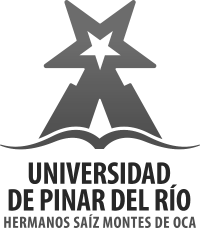Actividades extracurriculares en ciencias como variable mediadora: Predicción de la elección de carrera en ingeniería
Contenido principal del artículo
Resumen
El interés de los estudiantes por las carreras STEM está influenciado por diversos factores. Elementos como la identidad en física y las experiencias fuera del aula de ciencias desempeñan un papel fundamental en la elección de carreras en ciencia, tecnología, ingeniería y matemáticas. Este estudio analiza la relación entre el interés, la competencia y el reconocimiento en física, y la elección de carrera en ingeniería, así como la influencia de las actividades extracurriculares en dicha relación. Se utilizaron las respuestas de 282 estudiantes de ingeniería, recopiladas mediante un formulario de Google. Los resultados revelaron que la elección de carrera en ingeniería se correlaciona con el interés, la competencia y el reconocimiento en física. El análisis de mediación mostró que dicha elección se relaciona significativamente con la competencia y el reconocimiento en física, pero no con el interés, cuando intervienen actividades y experiencias fuera del aula de ciencias. El estudio concluye que el interés, la competencia, el reconocimiento en física y las actividades extracurriculares predicen significativamente la elección de carrera en ingeniería. Palabras clave: Actividades extracurriculares en ciencias, elección de carrera en ingeniería, interés en física, competencia en física, reconocimiento en física.
Descargas
Detalles del artículo

Esta obra está bajo una licencia internacional Creative Commons Atribución-NoComercial 4.0.
Citas
Avraamidou, L. (2021). Identities in/out of physics and the politics of recognition. Journal of Research in Science Teaching. https://doi.org/10.1002/TEA.21721
Catren, G. (2023). Identity, individuality, and indistinguishability in physics and mathematics: Philosophical transactions, Series A. Mathematical Physical and Engineering Sciences, 381. https://doi.org/10.1098/rsta.2022.0109
Cribbs, J., Hazari, Z., Sonnert, G., & Sadler, P. (2020). College students' mathematics-related career intentions and high school mathematics pedagogy through the lens of identity. Mathematics Education Research Journal, 1-28. https://doi.org/10-1007/s13394-020-00319-w
Godwin, A., Sonnert, G., & Sadler, P. (2015). The influence of out-of-school high school experiences on engineering identities and career choice. Paper presented at 2015 ASEE Annual Conference & Exposition, Seattle, Washington. https://doi.org/10.18260/p.24889
Hazari, Z., Sonnert, G., Sadler, P. M., & Shanahan, M. (2010). Connecting high school physics experiences, outcome expectations, physics identity, and physics career choice: a gender study. Journal of Research in Science Teaching, 47(8), 978-1003. https://doi.org/10.1002/tea.20363
Kalender, Z. Y., Marshman, E., Schunn, C. D., Nokes-Malach, T., & Singh, C. (2019). Gendered patterns in the construction of physics identity from motivational factors. American Physical Society Research, 15, 1-19. https://doi.org/10.1103/PhysRevPhysEducRes.15.020119
Lock, R. M., Hazari, Z., Potvin, G. (2013). Physics career intentions: the effect of physics identity, math identity, and gender. AIP conference proceedings, 1513(1), 262-265. https://doi.org/1063/1.4789702
Lock, R. M., Hazari, Z., $ Potvin, G. (2019). Impact of out-of-class science and engineering activities on physics identity and career intentions. Physical Review Physics Education Research, 15, 1-11. https://doi.org/10.1103/PhysRevPhysEducRes.15.020137
Martin-Hansen, L. (2018). Examining ways to meaningfully support students in STEM. International Journal of STEM Education, 5. https://doi.org/10.1186/s40594-018-0150-3
Moakler, M., & Kim, M. (2014). College major choice in STEM: revisiting confidence and demographic factors. Career Development Quarterly, 62, 128-142. https://doi.org/10.1002/j.2161-0045.2014.00075X
Monsalve, C., Hazari, Z., McPadden, D., Sonnert, G., & Sadler, P. (2016). Examining the relationship between career outcome expectations and physics identity. Paper presented at Physics Education Research Conference 2016, Sacramento, CA. 228-231. https://doi.org/10.1119/perc.2016.pr.052
Piesch, H., Gaspard, H., Parrisius, C., Wille, E., & Nagengast, B. (2020). How can a relevance intervention in math support students' career choice? Journal of Applied Development Psychology, 71, 101185. https://doi.org/10.1016/j.appdev.2020.101185
Potvin, G., & Hazari, Z. (2014). The development and measurement of identity across the physical sciences. Paper presented at Physics Education Research Conference 2013, Portland, OR. 281-284. https://doi.org/10.1119/PERC.2013.PR.058
Quintana, R., & Saatcioglu, A. (2022). The long-lasting effects of schooling: estimating the effects of science and math identity in high school on college and career outcomes in STEM. Socius, 8. https://doi.org/10.1177/23780231221115405
Sar, M. (2021). The development of questionnaire to measure science, technology, engineering and mathematics (STEM) career choice: evidence from Cambodia. Cambodia Education Review, 4(2), 21-46.
Verdin, D., Godwin, A., Sonnert, G., & Sadler, P. (2018). Understanding how first-generation college students' out-of-school experiences, physics and STEM identities relate to engineering possible selves and certainty of career path. 2018 IEEE Frontiers in Education Conference (FIE), 1-8. https://doi.org/10.1109/FIE.2018.8658878
Wang, J., & Hazari, Z. (2018). Promoting high school students' physics identity through explicit and implicit recognition. Physical Review Physics Education Research.https://doi.org/10.1103/PHYSREVPHYSEDUCRES.14.020111


